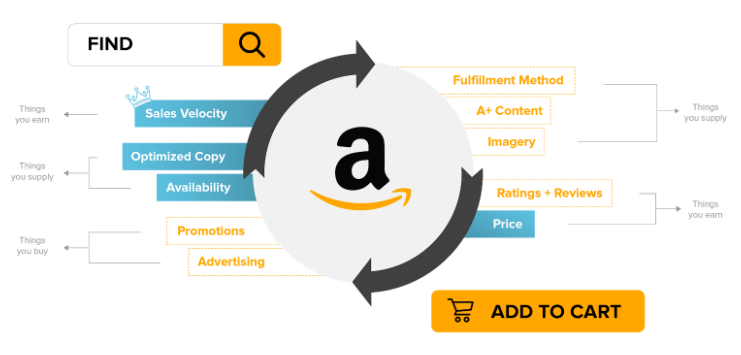Increase Amazon Sales Velocity | Amazon A9 Factors | Salsify

Winning on Amazon requires precision and confidence across your marketing and sales teams. With a variety of factors impacting brands’ performance on the etail giant, brands need to have a deeper understanding of how they are performing. The A9 algorithm is influenced by both direct (optimized copy, availability and price) and indirect factors (fulfillment, A+ Content, Imagery, Ratings + Reviews, Advertising) that determine your Search Ranking with Amazon.
On a recent webinar our EVP of Marketing, Malcolm Faulds, and Sr Product Manager of Ecosystems, Rovaria Dasig explored how the factors of the A9 algorithm coincide to drive sales velocity. Salsify has created a new solution, Salsify Command Center for Amazon, to help brands accelerate growth on Amazon.
Why is Sales Velocity important for Amazon Success?
Sales velocity is the proof that other shoppers found product matches based on the same exact search query. Essentially, the products you see at the top of the SERP are more likely to be a match for what you’re looking for. This means that sales velocity is central to success--if you aren’t showing up in the top of search pages, you won’t be winning the query. Sales velocity cannot be bought but is impacted by the things you supply (content & product) and the things you buy (promotions & advertising).

What are the requirements to be eligible for “Prime”?
Other than selling on Amazon itself, brands must opt into Fulfillment by Amazon (FBA) so they are able to control the shipment of the product and deliver it in their timely manner that Prime shoppers thrive on. Once you’ve set up FBA, you will need to maintain a strong Seller Metric --i.e your product needs to have a good reputation for reliable inventory that is delivered in a timely manner to be eligible for Prime Shipping.
Great content is important for Amazon, but are there a set of required images and product information that can live on a product page?
Every category is different, for example, a recent report of ours found that Tools & Home Improvement brands need at least 2 images of the product, whereas top performers in the Furniture & Home Goods sector have at least 4.8 images (across 15,000 pages) It’s important to remember that a product page is your merchandising strategy -- you wouldn’t leave out the benefits of your product on a package in the store. The digital shelf provides you more space to extrapolate value to your customer. Implementing A+ Content, an indirect factor to winning Amazon, gives your brand even more opportunity to capture buyers with additional content.
Written by: Caroline Egan
Caroline Egan (she/her) is a writer and former content marketing manager at Salsify, where she focused on crafting campaigns to drive brand awareness and customer engagement.
Recent Posts
Do Brands Need Social Media Influencers In The Age of AI?
How Can Brands Align With Consumers’ New Year’s Resolutions?
5 Ecommerce Tips To Help Marketers Enter the New Year Stress-Free
Subscribe to the Below the Fold Newsletter
Standing out on the digital shelf starts with access to the latest industry content. Subscribe to Below the Fold, our monthly content newsletter, and join other commerce leaders.

.png?width=750&name=Blog_CommandCenter_750x197%20(1).png)
.svg)